Catching a Glimpse of the World of Ninja - Japanese Film Screenings in Hungary
Shota Miyake
The Japan Foundation, Budapest
In early May 2013, a somewhat out-of-place billboard advertising appeared in the streets of Budapest. The monochrome picture of a ninja with the phrase A nindzsák földjén (The World of Ninja). It marked the start of the annual Japanese Film Week in Budapest.
The Japan Foundation has Japanese films' collection subtitled in English and other languages to be shown overseas. It provides these films to audiences across the globe ranging from international film festivals to smaller screening sessions, and from general moviegoer to Japanese Studies experts.
One screening program is the annual Touring Japanese Film Festival in East Europe, which travels to about a dozen countries in Central and Eastern Europe for a good part of the year. The 2013 film week in Hungary took place between May 6 to May 12 for seven days at the Toldi Mozi, showing seven movies under the theme of "Secret of Japanese Technology: Ninja, Transformation, Teamwork."
Hungary had bid farewell to a long winter and welcomed the fine, warm spring. Let's take a look at how audiences respond to the ninja of the silver screen came there that night.
Empathy for the humanity of anti-authoritarian Goemon
The opening film was Shinobi no mono / A Band of Assassins (1962, directed by Satsuo Yamamoto for Kadokawa, 105 min., B&W). The spectators readied themselves for a thrilling clash of the ninja. But before them, came strutting a dashing Ishikawa Goemon, portrayed by Raizo Ichikawa. The crowd was bewildered at first by this carefree, mischievous character that was the opposite of the cool, expressionless image of a ninja. Yet as the story took a serious turn and revealed Goemon's anti-authoritarian escapades, the audience came to sympathize with his humane side and they were glued to the screen.
The Japan Foundation conducts a survey for feedback from the participants of all programs. One respondent said, "I was 'handcuffed'!" This is a Hungarian expression that translates loosely into "The movie got me hooked" or "I was captivated." In other words, this spectator was mesmerized; the film won his heart.
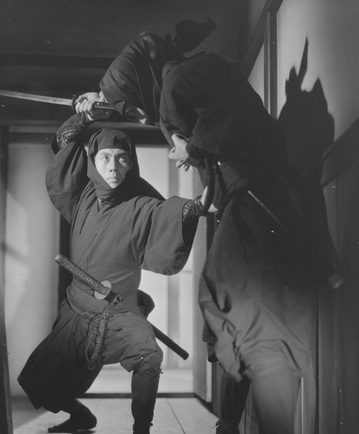
Shinobi no mono / A Band of Assassins (1962, directed by Satsuo Yamamoto)
Image courtesy of KADOKAWA
Japanese filmmakers' zeal for beautiful cinematography
The third day followed up on the popular Shinobi no mono / Band of Assassins with its sequel. Zoku shinobi no mono / Return of the Band of Assassins (1963, directed by Satsuo Yamamoto for KADOKAWA, 93 min., B&W) focused even further on the anger and sorrow--the humane side--of Ishikawa Goemon. Many of the spectators returned to watch the film, who welcomed the sequel as much as they did the original.
"It is often difficult to retain the quality of the original in a sequel. But this sequel maintains the quality of the original in both the direction and the cast." This response came from an apparent film aficionado. The Assassins series not only introduced the ninja as part of Japanese culture but also promoted the quality of Japanese films.
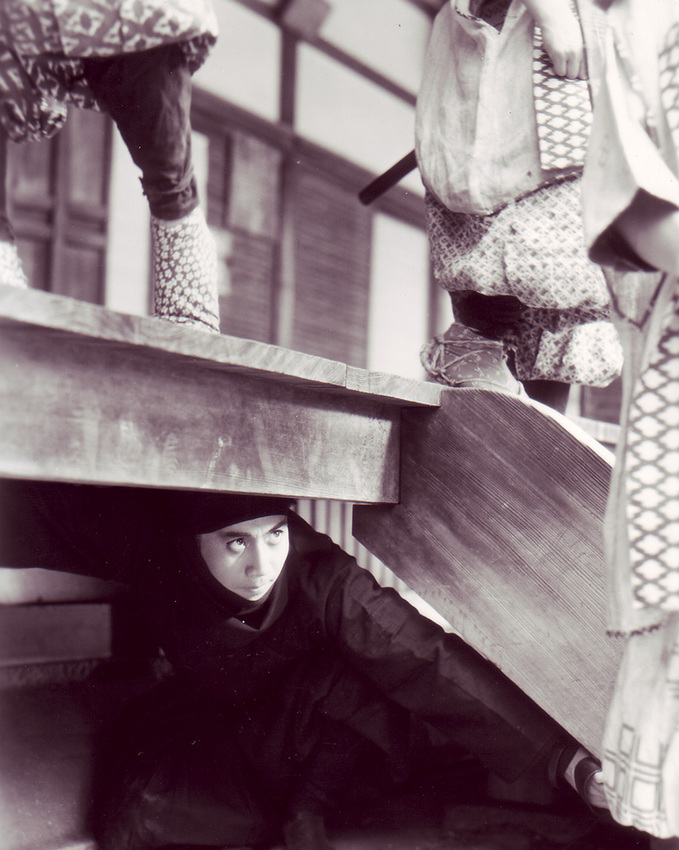
Zoku shinobi no mono / Return of the Band of Assassins (1963, directed by Satsuo Yamamoto)
Image courtesy of KADOKAWA
The fourth day, midway through this year's festival, Yukinojo henge / An Actor's Revenge (1963, directed by Kon Ichikawa for Kadokawa, 124 min., color), starring Kazuo Hasegawa as Nakamura Yukinojo, a male kabuki actor who plays female roles was screened. The audience was speechless as the story set in the glamorous kabuki theater unfolded and turned out to be a serious revenge tragedy. Besides responses about the plot were also many about the alluring imagery. The title demonstrated the dedication of Japanese filmmakers to beautiful cinematography.
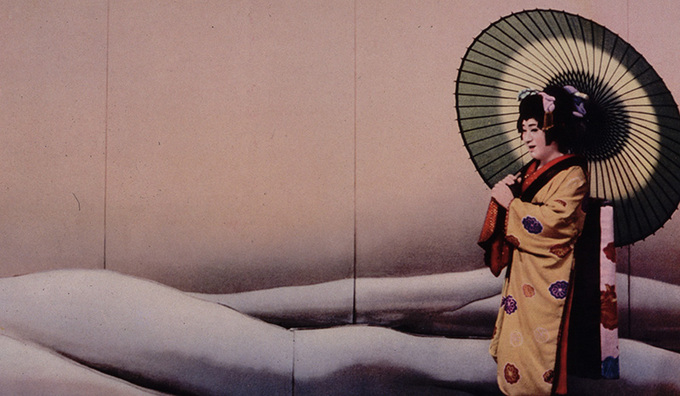
Yukinojo henge / An Actor's Revenge (1963, directed by Kon Ichikawa)
Image courtesy of KADOKAWA
Few happy endings in Japanese films?
The fifth day attracted the largest attendance with Kaze no bushi / Samurai Vagabond (1964, directed by Tai Kato for Toei, 95 min., color), starring Hashizo Okawa in one of his finest roles, as Nabari Shinzo. Responses to the survey were also the best of the week. But there was one curious remark: "Why are there few Japanese films with happy endings? Is this an influence of Buddhism?"
True, a country's culture is bound to have some influence on its films. Watching a Japanese movie necessarily involves catching a glimpse of Japanese culture. The remark made me realize anew the value of Japanese film screenings. They are not only about offering a good time but also an important form of cultural exchange programs.
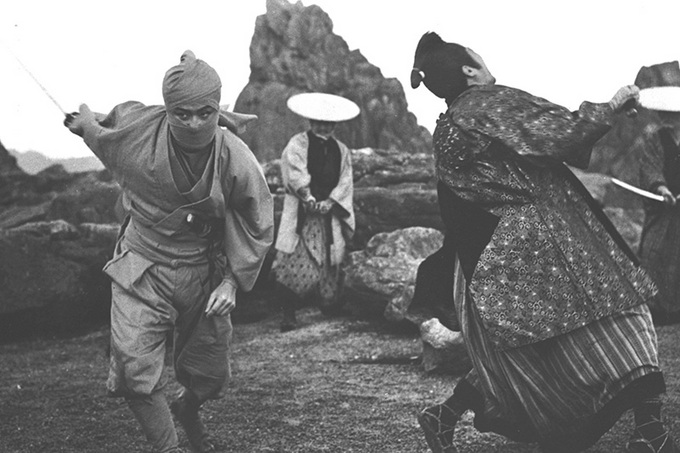
Kaze no bushi / Samurai Vagabond (1964, directed by Tai Kato)
Image courtesy of Toei
It is not an issue of whether the film is old or new
Of the seven films we selected for this year's Japanese Film Festival, many were made in the 1960s. They are by no means new (in fact, they are older than I am). Looking at the lineup alone, some might think the titles are outdated. Perhaps we would have had an even greater response if we had shown the latest anime movies.
But films of the '60s have a quality all their own. They represent the Japanese culture, view of the world, and humanity in a way unique to the films from that time. Having finished screening all seven films, I was convinced that the Hungarian audiences appreciated the universal values embodied in the selection.
The purpose of cultural exchange is not only to introduce the new aspects of Japanese culture but to make an audience feel some facet of Japan that the audience was never aware of before. Whatever the film is, it's crucial to recognize its value and properly present it. Whether that film is old or new is not the issue.
It may be silly to plan so far ahead, but it makes me feel so excited to think what facet of Japan I want to offer to Hungarian audiences next year...
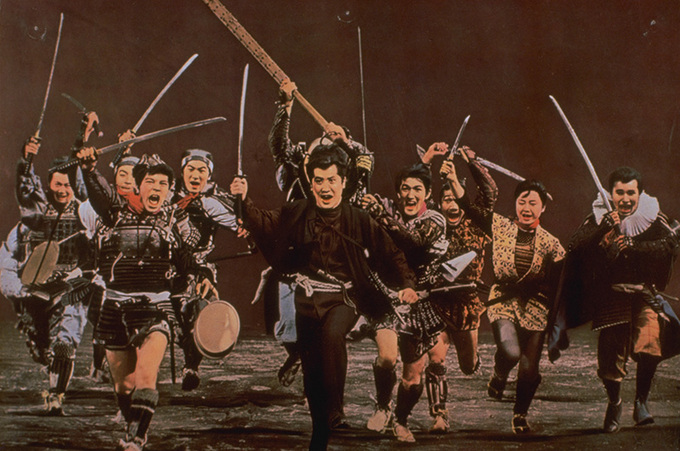
Sanada fuunroku / Brave Records of the Sanada Clan (1963, directed by Tai Kato)
Image courtesy of Toei
Touring Japanese Film Festival in East Europe 2013 (titles)
1. Shinobi no mono / A Band of Assassins
(1962, directed by Satsuo Yamamoto for KADOKAWA, 105 min., B&W)
2. Sanada fuunroku / Brave Records of the Sanada Clan
(1963, directed by Tai Kato for Toei, 90 min., color)
3. Zoku shinobi no mono / Return of the Band of Assassins
(1963, directed by Satsuo Yamamoto for KADOKAWA, 93 min., B&W)
4. Yukinojo Henge / An Actor's Revenge
(1963, directed by Kon Ichikawa for KADOKAWA, 124 min., color
5. Kaze no bushi / Samurai Vagabond
(1964, directed by Tai Kato for Toei, 95 min., color)
6. Ibun Sarutobi Sasuke / Samurai Spy
(1965, directed by Masahiro Shinoda for Shochiku, 100 min., B&W)
7. Cyborg 009: Legend of the Super Galaxy (Cyborg 009 Cho Ginga Densetsu)
(1980, directed by Masayuki Akehi for Toei Animation, 130 min., color)
"Secret of Japanese Technology: Ninja, Transformation, Teamwork" (concept)
Japanese technology has progressed and companies have advanced abroad since the economic growth in the 1960s, through the lost decade, and into the 21st century. What supported this growth? The hard-working, persevering nature of the Japanese people, their attention to details, their spirit of craftsmanship that drives them to achieve greater heights... All these elements played a part. And the secrets to these elements can be traced back more than 400 years, to the Edo period.
One of the secrets is the presence of worldly known ninjas. These special agents trained their body and mind in groups. They were responsible for collecting information and carrying out the "impossible mission". Not only did each ninja function flawlessly, but each also had a precisely, even relentlessly defined role in fulfilling their mission. The stringent demands on the individual and the tradition of completing a mission as a group are depicted in manga and anime, as well as in live-action historical films, where the tradition are viewed as more than mere entertainment and studied as a philosophy.
The selected films are themed around the ninjas, whose practices have been distorted and at times misunderstood, but which has gained legendary status outside Japan. Each work presents the Japanese people's knack for transformation, their skill and control in shifting between their overt and covert identities, the beauty of the gap between the two, and the splendid techniques by which the group's mission is accomplished. The ninja as an individual takes a stand against the group, or who endures a life of hardship to exact revenge, represents the individualism of Japanese, which surprisingly may be stronger than that of any Westerner. Together, the films promise to offer an understanding of the goal on matter and mind that Japanese is seeking and the ideal of the function as a group.
It is hoped that the selection to help moviegoers overseas discover the ninja--these undercover agents famous in name but whose true identity still remains a mystery--and through them, the Japanese art of transformation in a moment of crisis, and the concept of teamwork in pursuing a goal.
Keywords
- Film
- Japanese Studies
- Japan
- Hungary
- The Japan Foundation Budapest
- Ninja
- Budapest
- Touring Japanese Film Festival in East Europe
- Toldy Mozi
- Satsuo Yamamoto
- Raizo Ichikawa
- Kon Ichikawa
- Kazuo Hasegawa
- Tai Kato
- Hashizo Okawa
- Masahiro Shinoda
- Masayuki Akehi
- Cyborg 009
- KADOKAWA
- Toei
- Shochiku
- Toei Animation
Back Issues
- 2024.3. 4 Movie Theaters aroun…
- 2023.4.10 The 49th Japan Found…
- 2023.3.28 JF's Initiatives for…
- 2023.1.27 Living Together with…
- 2022.11.16 Inner Diversity <…
- 2022.6.21 The 48th Japan Found…
- 2022.3.22 JF's Initiatives for…
- 2022.3.14 JF's Initiatives for…
- 2022.2.14 JF's Initiatives for…
- 2022.2. 4 JF's Initiatives for…

